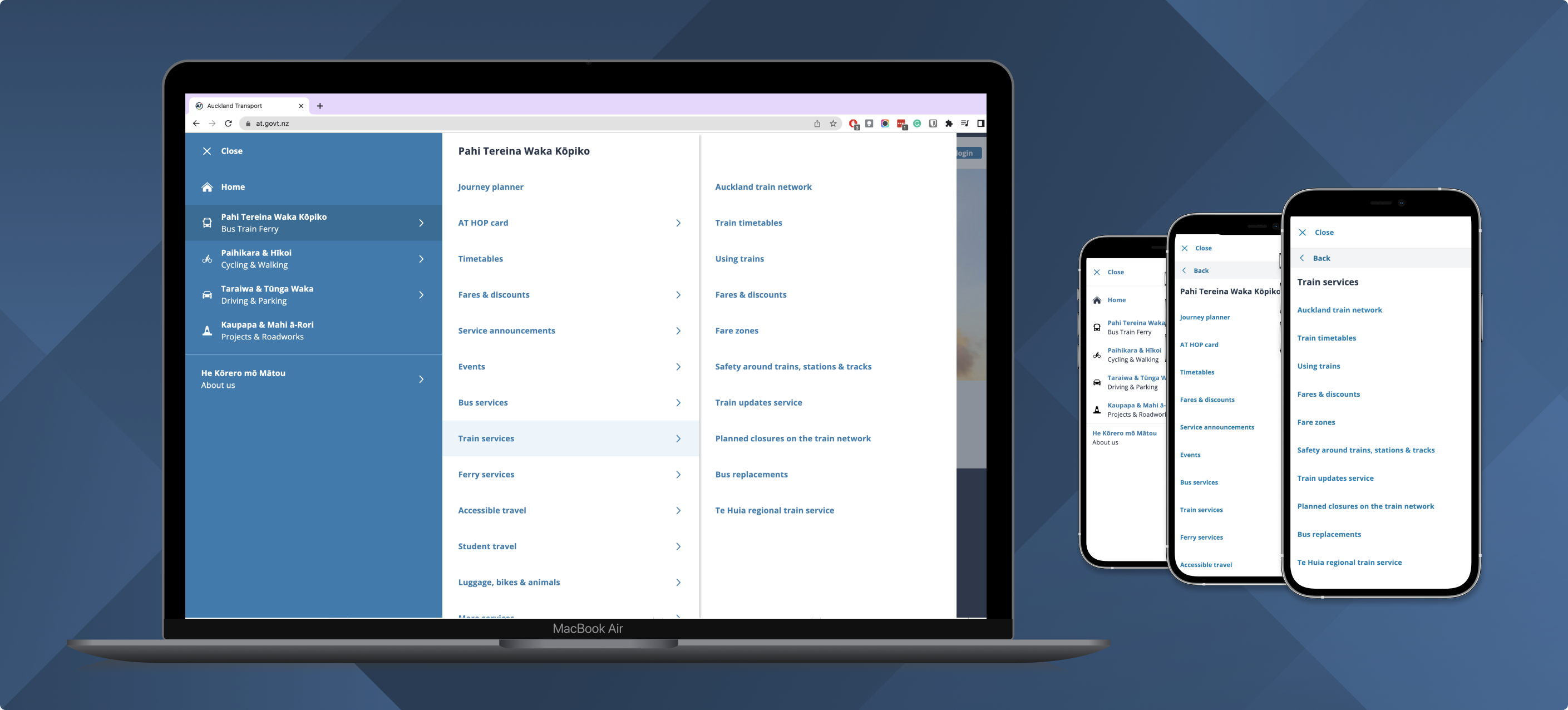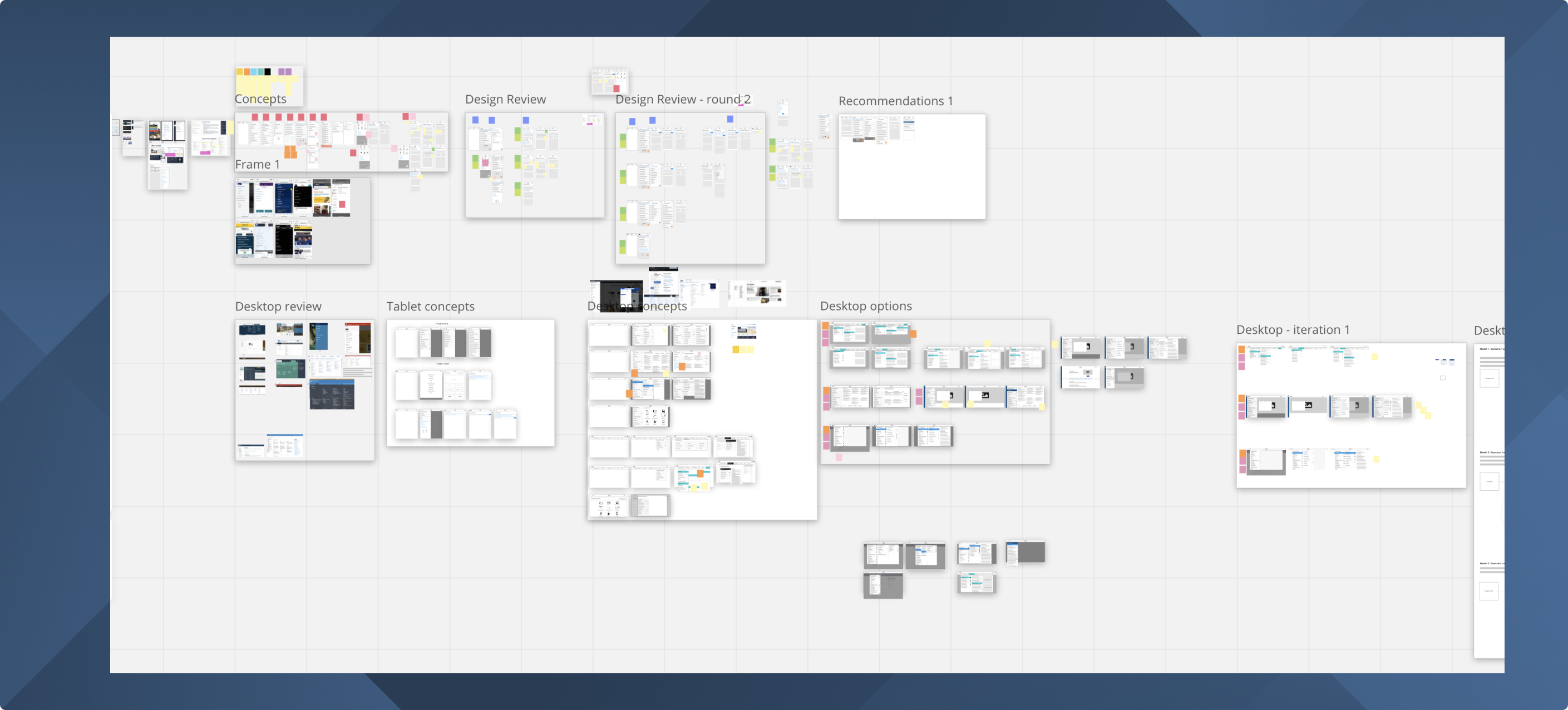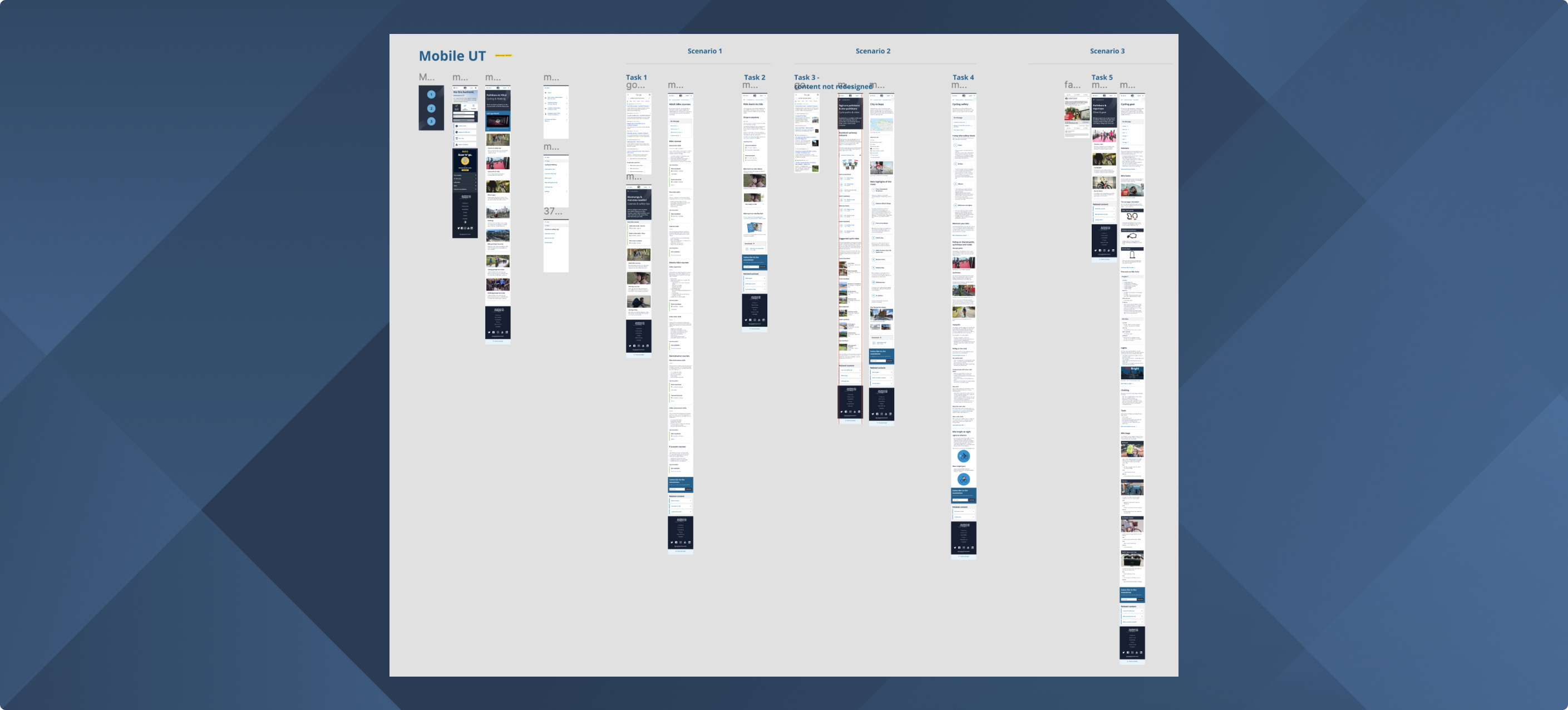
To reduce pressure on the call centre and improve user experience, Auckland Transport set a goal to increase self-service across digital channels. I led UX design for the website stream, focusing on content findability, accessibility, and user confidence.

A critical challenge was balancing cultural values and practical UX: How could we incorporate Te Reo Māori into navigation in a way that respected its significance, while maintaining accessibility for all users?

I led the team through a series of co-design workshops and user testing cycles, facilitating conversations across Māori engagement advisors, accessibility experts, and product stakeholders. The result was a bilingual menu structure that was both culturally respectful and usability-validated — and passed formal accessibility audits.
Collaborating with Māori advisors, engineers, and AT’s internal design team showed me the power of building systems that can succeed beyond your own involvement. And building strong relationships across external product owners and engineering teams reminded me: influence isn’t always formal; it’s earned through trust.